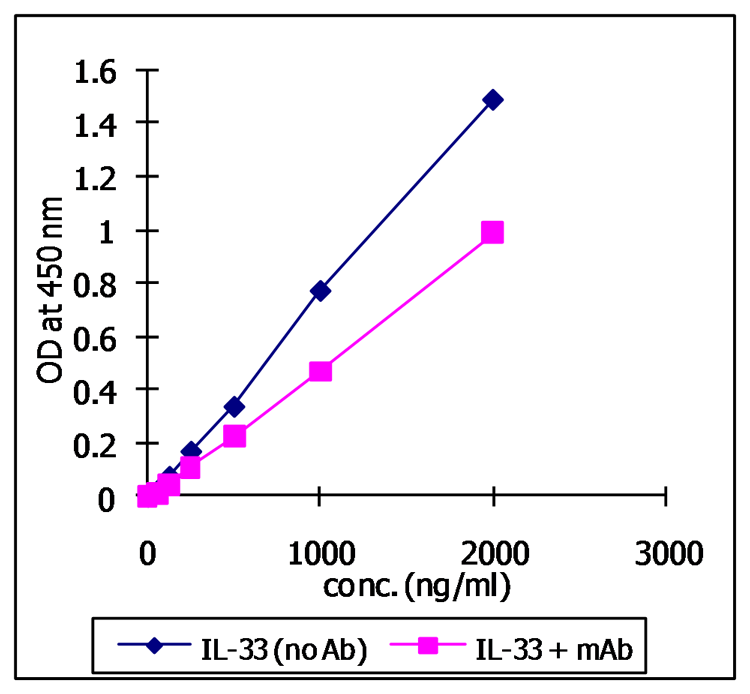
Detection of endogenous human ST2 with anti-ST2 (human), pAb (AG-25A-0058). Method: THP1 cells were stained with anti-ST2 (human), pAb (1:100 in PBS + 2% FCS) (Figure B) or with the secondary antibody alone (Figure A) for 1h at 4°C. The staining wa
anti-ST2 (human), pAb
AG-25A-0058
ApplicationsFlow Cytometry, Western Blot, ELISA
Product group Antibodies
ReactivityHuman
TargetIL1RL1
Overview
- SupplierAdipoGen Life Sciences
- Product Nameanti-ST2 (human), pAb
- Delivery Days Customer10
- ApplicationsFlow Cytometry, Western Blot, ELISA
- CertificationResearch Use Only
- ClonalityPolyclonal
- Concentration1 mg/ml
- Gene ID9173
- Target nameIL1RL1
- Target descriptioninterleukin 1 receptor like 1
- Target synonymsDER4, FIT-1, IL33R, ST2, ST2L, ST2V, T1, interleukin-1 receptor-like 1, growth stimulation-expressed, homolog of mouse growth stimulation-expressed, interleukin 1 receptor-related protein
- HostRabbit
- Protein IDQ01638
- Protein NameInterleukin-1 receptor-like 1
- Scientific DescriptionPolyclonal Antibody. Recognizes soluble human ST2. Detects a band of ~50kDa by Western blot and the endogenous ST2 by Flow Cytometry. Source: Rabbit. Applications: ELISA, FACS, WB. Liquid. In PBS containing 0.02% sodium azide. ST2 is a member of the Toll/IL-1 receptor family. Two forms of the protein exist, a soluble form known as ST2 and a membrane anchored form known as ST2L. The membrane form is expressed by Th2 cells and bone marrow derived mast cells, whereas the soluble form is expressed by serum-stimulated fibroblasts. It binds IL-33 and is structurally similar to IL-1R1. Type 2 innate lymphoid cells (ILC2), originally referred to as natural helper (NH) cells, are a novel target of IL-33. Lung ILC2s participate in the induction of airway inflammation in influenza virus-infected mice and papain-administrated mice. Soluble ST2 plays a role in protecting ILC2 from IL-33 stimulation and thereby maintaining them in a naive state and might be important for the regulation of several disease. Blocking with anti-ST2 antibodies has been shown to alleviate experimental arthritis and airway inflammation. The IL-33-ST2 axis is is involved across a range of diseases including asthma, allergies, obesity and cardiac disease. - ST2 is a member of the Toll/IL-1 receptor family. Two forms of the protein exist, a soluble form known as ST2 and a membrane anchored form known as ST2L. The membrane form is expressed by Th2 cells and bone marrow derived mast cells, whereas the soluble form is expressed by serum-stimulated fibroblasts. It binds IL-33 and is structurally similar to IL-1R1. Type 2 innate lymphoid cells (ILC2), originally referred to as natural helper (NH) cells, are a novel target of IL-33. Lung ILC2s participate in the induction of airway inflammation in influenza virus-infected mice and papain-administrated mice. Soluble ST2 plays a role in protecting ILC2 from IL-33 stimulation and thereby maintaining them in a naive state and might be important for the regulation of several disease. Blocking with anti-ST2 antibodies has been shown to alleviate experimental arthritis and airway inflammation. The IL-33-ST2 axis is is involved across a range of diseases including asthma, allergies, obesity and cardiac disease.
- ReactivityHuman
- Storage Instruction-20°C,2°C to 8°C
- UNSPSC12352203






